Mariano Melo, aka Marian Sarine, is a Brazilian multi-instrumentalist, specializing in percussion and drums, based in São Paulo. Known primarily for his work as drummer/percussionist for DEAFKIDS, Marian Sarine has also been collaborating with a wide array of artists and acts, as diverse as Rakta, the Avant-grindcore band Test, the psychedelic outfit Hierofante, and acting as the percussive half of the duo Cavalo Serpente. He is also active as a live musician playing synths and percussion with the electronic musician Felinto.
During his 10-year career, Marian Sarine has played at many critically acclaimed festivals with his different projects, such as VideoEx Experimental Film Festival (CH), Roadburn (NL), Supersonic (UK), Amplifest (PT), Donau (AUS), OUT.FEST (PT), SWR Barrosselas Metalfest (PT), Integraciones (PERU), Obscene Extreme (CZ), Punk Illegal (SWE), Campus Party (BRA), CryptoRave (BRA), Virada Cultural (BRA), DoSol (BRA), Coquetel Molotov (BRA), Bananada (BRA) and more.
In 2020, under the moniker of ‘Sarine,’ Marian released his first solo outing, ‘Raízes Aéreas,’ through Lovers and Lollipops (PT). On the album, recorded in its entirety through his cellphone during quarantine, he showcases a psychedelic excursion through percussive organ jams, improvising with himself through the use of arpeggio patterns, inspired by African synth/organ masters such as Mammane Sani, Abdou El-Omari, Hama, as well as the explorations on traditional ragas by Charanjit Singh on his ‘Ten Ragas To a Disco Beat.’
His aesthetic language takes off from the various dichotomies connected to the rhythmical phenomena; from the exploration of its primordial dimensions, linked to the very beginning of musical construction as a whole, to the unfolding of its possibilities as a sophisticated resource, and as a north for possible futures.
Hello DJ Jet! Thanks for the opportunity! It’s a blast to be able to talk about my relationship with music and drums!
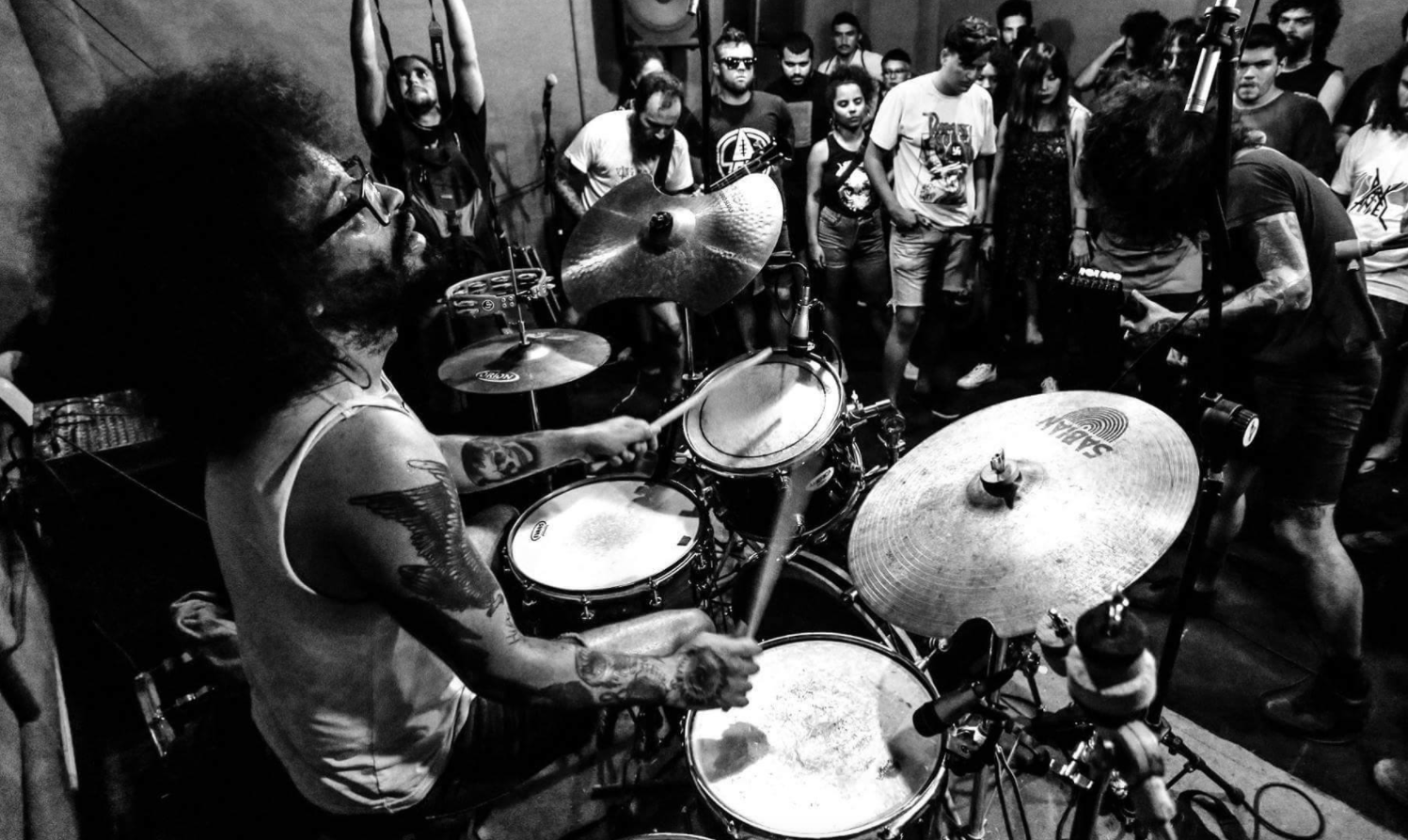
SDM: So Marian… when did you become interested in beats and percussion?
I began playing drums as I got involved with hardcore punk when I was around 15/16 I guess? I had really good friends and we were really into thrashcore and power violence… but their band already had all the members, so I ended up as their official cheerleader. My first band was a typical ‘hometown band’, playing a type of hardcore punk which wasn’t my real interest, but it was fun, and a starting point, nonetheless.
SDM: What were some of the first instruments you started playing?
Basically drums, around that age. Then, when I was 23 I began playing other percussion instruments and began learning the acoustic guitar to play some samba. From there, the door was open (I used to believe I couldn’t play melodic/harmonic instruments).
SDM: What is it about percussion that is important to you personally?
Rhythm and its perception pretty much changed my life. We walk rhythmically, the heart beats to a pulse, many circles (like day and night) happen on their own flow. Nowadays I believe sound to be the fabric of the universe, and the oscillation, the vibration that is rhythm is what creates 0 and 1, sound and silence, and so forth. Rhythm is an organizational force, and we assimilated it and created complex systems around it as an imitation of natural processes. Many cultures around the world use rhythm as a tool for trance induction – a remembrance that body and mind are one.
Playing percussion means having the wisdom to sneak around the pulse with awareness, both denying it and affirming it, hiding it and exploring it. It is a really strong way of manipulating energies and creating communion when done collectively. To enter this stream is both an honor and the biggest of pleasures – especially when, like playing with Felinto, there’s already a beat and I’m free to mess around with it.
SDM: Who are some of your favorite drummers and percussionists?
Always a hard one, here are some! I’ll name the ones I can remember from the top of my head. For drummers, I’d say Jaki Liebezeit, Tony Allen, Ginger Baker, Art Blakey, Ademir Batera (from Fundo de Quintal), Bobby Caldwell, Robert Wyatt, Bill Bruford, Harold Ray Brown, Billy Higgins, Jimmy Branly, Tiki Fulwood. If I had to name an ‘extreme’ drummer, that would be Dave Lombardo.
Recent drummers from Brazil I admire include the master Edu Ribeiro, and for more extreme measures, Barata from Test and Ítalo from Damn Youth, who have a really personal take on already existing ‘extreme’ genres.
For percussionists, Naná Vasconcelos, Pedro Santos, Djalma Corrêa, Guem, Zakir Hussain, Tito Puente, Ray Barreto, Eitetsu Hayashi, Ubirany (RIP Master), and Sereno from Fundo de Quintal (inventing instruments used by a whole generation of musicians is quite something), Papa Dee Allen, Sabu Martinez, the whole Ndagga Rhythm Force band. it’s hard to stop!
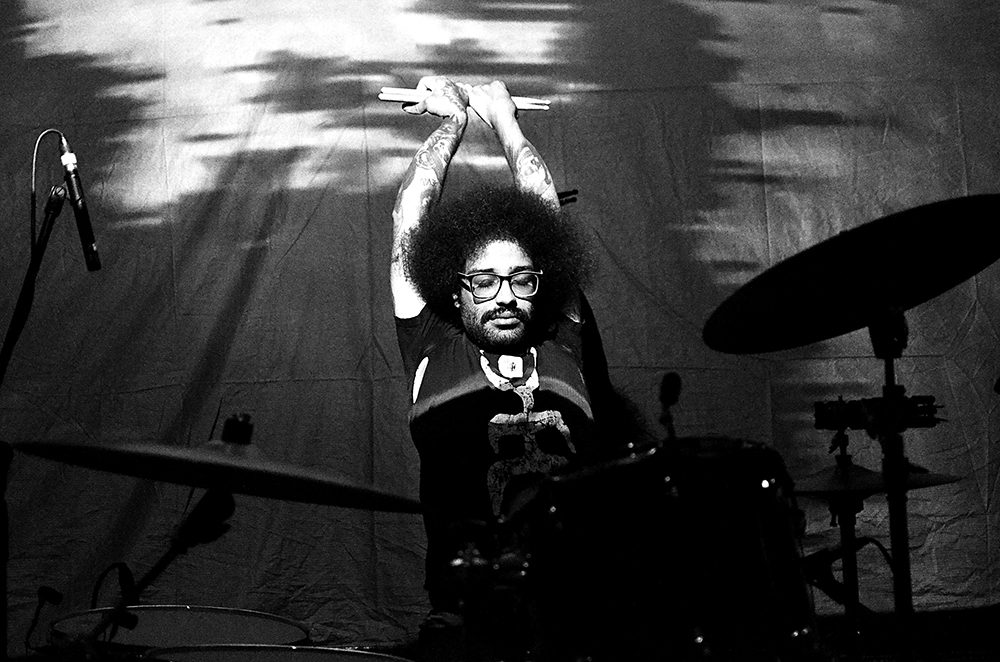
SDM: Living in Brazil, how does Brazilian music and culture influence you when making music?
Growing up with such a rich background (Brazil probably has the most native, urban twentieth-century original genres in the world, like Samba, Lundu, Frevo, Pagode, Forró, Baião, Carimbó, and a plethora of others), that influenced me a lot. I’d say that being used to these types of music made an impact, even if unnoticed at first.
The financial limitations and social background of being Brazilian affected me as well – if it wasn’t for punk, many like me would never dare to play music. That also makes music both a more communal thing (as you depend more on others), but it also limits your possibilities and horizons. Being aware of that makes me feel like writing ‘feverish’ music, music with a hunger for more, that is clearly coming from within.
I feel very connected to the percussive parts of Brazilian music… Certain Brazilian vanguard music historically tends to lean heavily on poetry, acting as a scenic element to either complement or deny the lyrics, and that is what I feel less influenced by, as I search for the effect sound itself causes on a more ‘universal’ way, rather than stumbling on intelligibility issues, regardless of the presence of lyrics or not.
SDM: Tell us a bit about your influences in psychedelic drumming.
For me, the idea of music that is restricted and free at the same time is very appealing. The way Jaki Liebezeit played in Can is a good example. He’s never doing the same thing, but that doesn’t mean playing a huge fill across the song, but rather playing in a way that mixes both, over-imposing beats with different meters, but the same pulse, forcing you to understand the ‘meaning’ behind it.
Another good example is the concept of ragas, in both Hindustani and Carnatic heritages. You have a set of intervals, a mood to set, and feelings to evoke, you can choose the rhythmic cycle and the tempo… all the rest is up to you (of course it’s more complex than that, but that’s an overview). It’s music that breeds creativity and innovation, that takes the past into consideration while aiming at the future, while being rigid and fluid.
This even affects the way I play melodic instruments… On keys I generally have a bass pattern in one hand while the other hand plays around it, trying to keep both as free as I can. The jams that became Raízes Aéreas were born like that. Being able to have my limbs (or my fingers, in this case) acting independently but coordinated is always my aim – creating music that satisfies my body’s dancing urges as well.
SDM: Talk to us a little about rhythm and transcendence and how it pertains to you when making your music.
I used to play and enjoy gigs and occasional tours, but I thought it was for the company, for the scene, and the people – the general vibe.
As the frenzied orthodoxy of hardcore punk/metal wore off, I returned to sounds I used to listen to at home (like samba), as well as developed (with the guys from DEAFKIDS) a really big interest in psychedelic percussive music from around the world. Around that time I began having psychotropic experiences, and one in specific caused me to see that I was connected to music since I was a kid (even with flashbacks and the whole lot) and that my link to it was something more… indelible. At one point during the trip, I had complete percussive control of my body, and I kept drumming the floor where I was for like three hours.
After that, every time I take a toke I access a spark of that… it changes my perception of time and pulse, and it works for every instrument. Needless to say, I generally smoke before playing. Of course, this is a very personal thing, some crazy-ass process that happened inside my psyche. I’m not encouraging anyone to do it or not! 😉
What struck me that day was the connection between body and mind, the transcendental third stage that’s reached when the spirit that is the musician plays the body that is the instrument…
Sound is irrefutable – you can’t prevent it from invading you, you can’t close your ears.
SDM: What is a routine practice session like for you and what are some of the elements you focus on the most during a practice session?
Well, it depends! As I don’t have a drum set at home I get ‘drumstoolsick’ far too often. At home, I try to practice rudiments and more technical aspects on the pad. Sometimes I book some hours at a studio just to play – both to try crazy-ass grooves I imagined during the week, trying to play on top of recordings, as well as practicing the rudiments on a real kit. Of course, there’s generally a point where I just want to play freely, discovering things along the way.
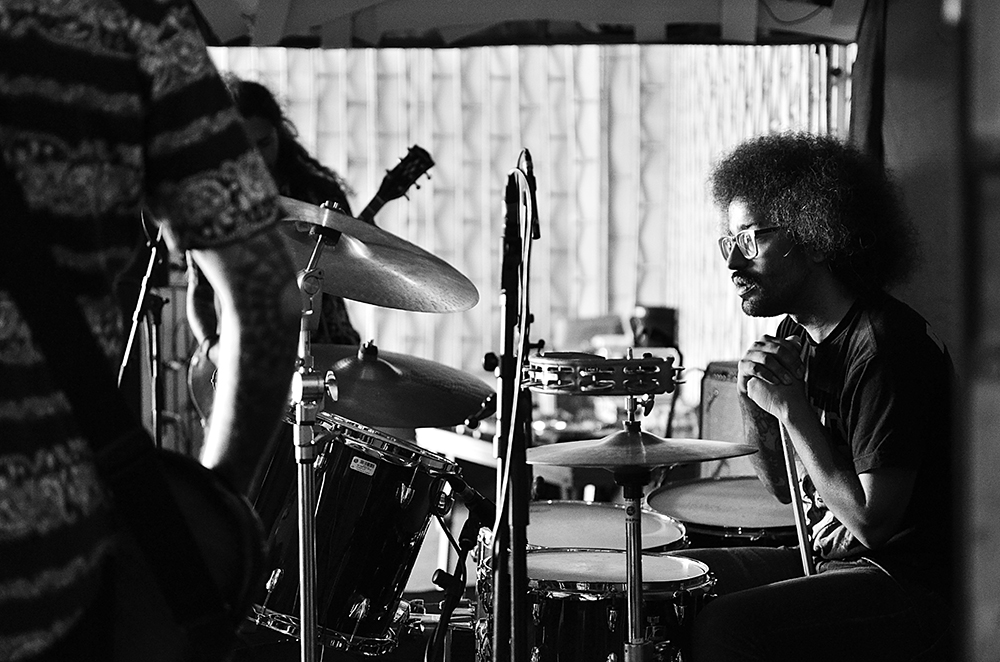
SDM: When did you get involved with Deaf Kids and what are some of your releases?
They are from the countryside of Rio de Janeiro, and I was living in São Paulo (a 4-hour drive) – In the beginning, the band was Douglas by himself, recording all the instruments and writing all the songs. In 2010, he assembled a live line-up, and we played together a couple of times, with other bands I was involved with…
At some point by the end of 2010/beginning of 2011, they approached me saying their drummer was leaving the band, asking if I was interested, which I was. We kept it like this for a while – he recorded and wrote everything, we played live. When we went to Europe for the first time in 2014, they decided to move to São Paulo, and we began living together. We then began writing and recording everything as a full unit. My first release was the split 7” with Timekiller, and from there, everything the band did – Configuração do Lamento (first as a k7, then as a 10”), Metaprogramação 12,’’ a collab 7” with Rakta, some live recordings we released on Bandcamp, DEAFBRICK and the songs for the Cyberpunk 2077.
SDM: When did you meet Iggor Cavalera and what led up to the decision to release a split with him and his band Petbrick?
He reached to us through social media saying he enjoyed our music, which was a shock! We were then preparing an album with remixed versions of Configuração do Lamento’s songs, and we asked him to participate, as we knew he was into electronic music. He did it with his then-new project, Petbrick, and the result was stellar! We met personally when DEAFKIDS played in London, and mentioned we were playing Roadburn festival the next year, so he mentioned the possibility of doing something together. We offered the idea for the festival and they said yes! So we had a concert playing extended versions of both bands’ songs, and it was a blast – we could clearly see how original songs with that line-up would sound crazy, so we decided to write new material!
SDM: Tell us a little about the writing and recording process of that album and how everyone contributed. What was it like working with Iggor?
It was a blast! We had two and a half days, as we were in London in the middle of a tour. It was very fluid, and Wayne is a hell of a producer. As we had many possibilities, we took the opportunity to create as freely as we could. We had songs on which Iggor plays the drums, tracks on which I do, drum machines, drums played as percussions, both of us playing on top of each other – even a song where the guys played an open-tuned guitar as a percussion while we played only cymbals. We really went out there.
Recording with Wayne and Iggor was marvelous, as they are not only great musicians but great human beings as well. Both are really good at conveying ideas, and their expertise with electronic music meant many ideas were born at a very ripe stage. I can’t wait to do it again. It was an honor to smack my hands at a kit at the same time as Iggor! He’s very supportive and a down-to-earth, accessible guy – an inspiration both as a musician and as a person.
SDM: Marian, how would you describe your art? How do you feel when you are in the creating process and what are your wishes that others who listen will experience?
I would describe what I do as an attempt to keep my body and mind sane, as well as helping with others’ sanity as well. When I create, I generally improvise one layer on top of the previous one, to create this percussive construction where the pulse is visible, but the need for recognizable structures vanishes over time. Something to connect me with myself as I fade away in the action – both through the physical process of playing, as well as receiving sound as a physical phenomenon. To create something that is contemporary as it aims towards primordial energies and the uncharted future, on which tapping your feet or dancing and meditating are not contradictory, but coexist.
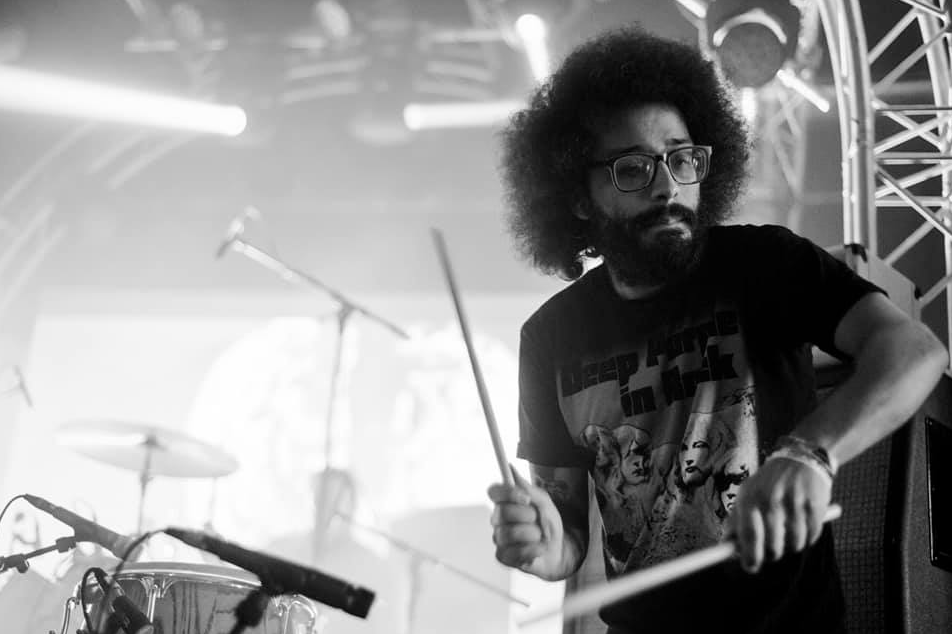
SDM: How has the band been coping in these times during the pandemic and what is on the horizon for the band in 2021?
Well, being the train-wreck that 2020 was, we focused on trying to create as most as we could with the means we had. So we released volumes I, II, and III of a series of experimental EPs called Ritos do Colapso, through bandcamp, as well as recorded some live performances for festivals and such. That year saw the release of two songs on the Cyberpunk 2077 soundtrack, as well as the album with Petbrick, so we had something to celebrate. We were fortunate to have people supporting us through merch and bandcamp sales, so even with the two tours we had to cancel, it wasn’t a wasted year.
For 2021, it’s still hard to tell, as we’re not even sure when we’ll get vaccinated. Fact! The magazine released an episode of their Patch Notes series featuring us, and we recorded some other lives for online festivals, and we’re still observing and trying to understand what’s going to happen this year.
SDM: Marian, I very much enjoy your music/art and the urban aspect and feel to it. Thank you so much for this interview and all the best to you and the band in the new year.
It’s me who says thanks! Thanks for the opportunity and for the kind words! Stay in as much as you can, for yourself and others – my mother was heavily affected by Covid and we went through hell because of it. It’s a pain I don’t wish on anybody. Luckily she’s fine now, but around 300k Brazilians (as I write this) and many people around the world weren’t so lucky – as well as the myriad of after-effects and sequelae those who survived have to face from now on. This shit is serious and we should take it as such, even when people in charge (like our deranged president and his cabal of science-deniers) effectively try to undermine these efforts. Let’s reject fascism and take care/respect each other. Peace and awareness!
Marian’s Gear:
I’d say it’s nothing fancy. I use two floor toms instead of two toms, so generally 14” for the tom and 16”/18” or 18”/20” (when I’m lucky) for the floor toms. Due to common difficulty with transportation, I generally travel with my cymbals, counting with rental gear for the rest of the kit. I prefer to use two crash rides, for variations on attack patterns, as Deafkids doesn’t have many parts with ‘pinging’ cymbals.
14” Zildjian ZBT Hi-hat
LP Hi-hat Tambourine
20” Octagon Groove Crash Ride
20” Paiste 2002 Crash
My other breakables are:
14” RMV Bapeva 14” x 5.5’’ Snare
Mapex P500 Single Pedal – feltrum beater
LP Aspire 13” and 14” Timbales
LP Giovanni Hidalgo Compact Congas 11” and 11 3/4”
Marian’s Links:
For DEAFKIDS, you can follow us at
http://www.instagram.com/deaf_kids
and listen to our crazy-ass music at
http://deafkidspunx.bandcamp.com
For my solo career (as well as partnerships with Felinto and other artists) you can follow http://www.instagram.com/sarinesarine_
and listen to it at http://sarine.bancamp.com – Raízes Aéreas will be out on K7 tape by Bilik Chaos from Malaysia, shipping worldwide on a limited run of 100 copies. More news coming soon!
https://www.youtube.com/watch?v=x2uPXeERvbw – Deafkids – Selva Pulsátil – Cyberpunk 2077 OST
https://www.youtube.com/watch?v=Bh8d5ohDeDg – Videoclip for Deafkids’ Espirais da Loucura, outta Metaprogramação 2019
https://youtu.be/om4_dYrM0YA?t=321 – Deafkids (feat. Petbrick) – Live at the Lexington, London, 2019 Full Set
https://www.youtube.com/watch?v=mwCe8ZOGkpc – Patch Notes – Deafkids
https://www.youtube.com/watch?v=-c93hwvW1RQ – Deafkids live at Soupkitchen, Manchester, 2019 Full Set

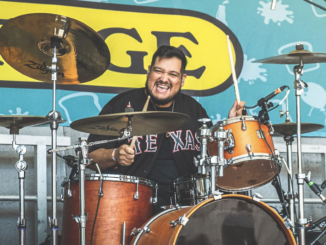
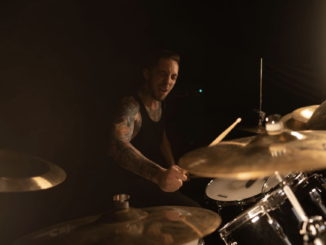
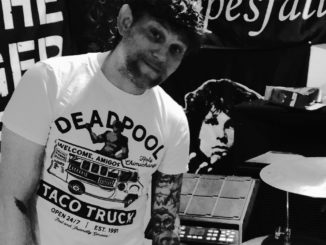
Leave a Reply